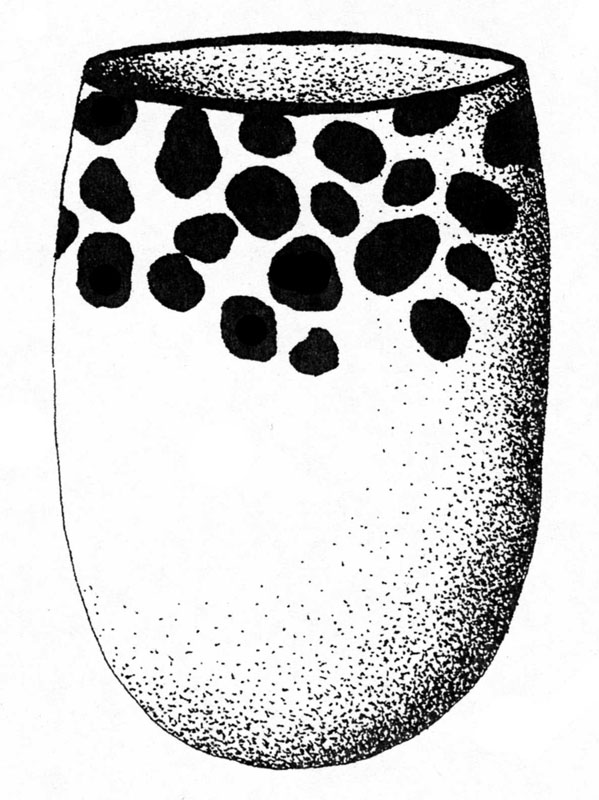Mesquite Bay

“Mesquite Bay” is a tenuous motif represented by irregular areas of blotchy black painting that Maria Mounger referred to as “uneven dabs.” This “dabbing” appears as a number of individual design elements that apparently cover a relatively large area of the exterior of the vessel, as compared to the more carefully applied dots found on Rockport Black and Rockport Black-on-gray. Dabbed rim sherds in the current collection exhibit both plain and banded lips. For now, both lip forms are included in the motif, but it may be prudent in the future to establish separate motifs for those sherds that contain lip banding and those that lack such banding. Whatever the case, it will be necessary for future studies to acquire a greater sample of the “Mesquite Bay" motif, particularly on larger sherds, before the validity of this motif can be confirmed.
Previous discussions of Rockport ceramics fail to mention any designs similar to “Mesquite Bay.” However, both editions of the Handbook of Texas Archeology noted sloppily applied asphaltum coatings that were attributed to crack-mending and/or waterproofing attempts. While this may be the case in many instances, it is possible that some of the sloppy coatings actually represent intentional designs similar to the “Mesquite Bay" motif. Six of the sherds illustrated in the Handbook as examples of Rockport Black-on-gray, also are illustrated by Mounger and identified as Goliad Black-on-buff. Of these, at least two could be examples of the random dabbing mentioned by Mounger.